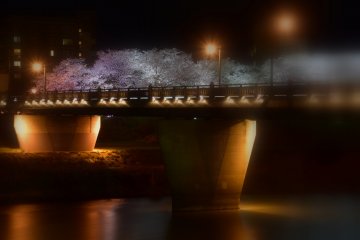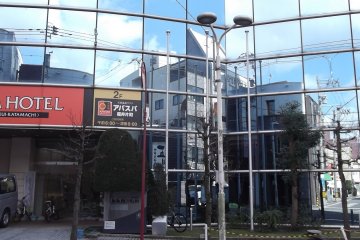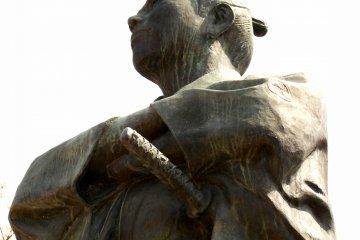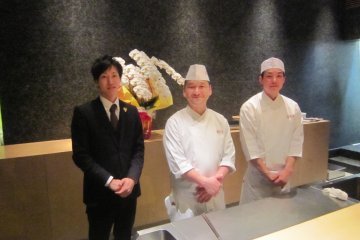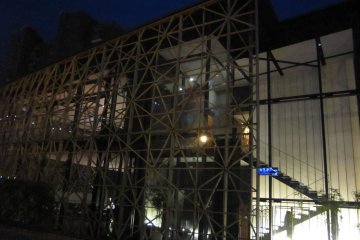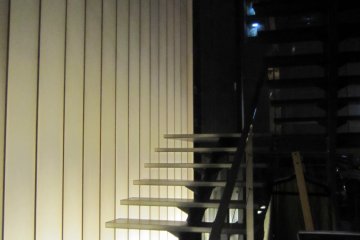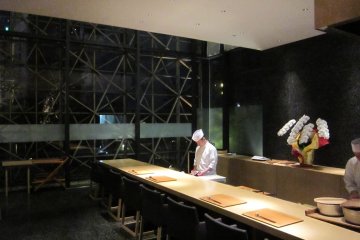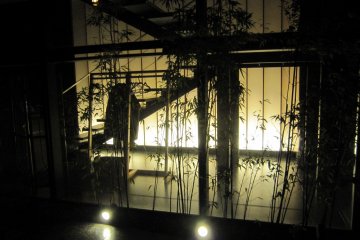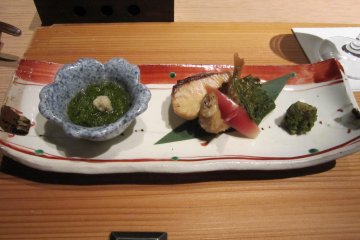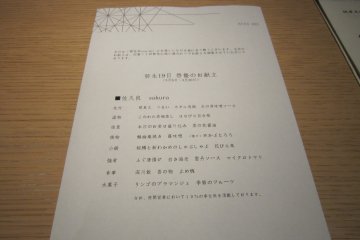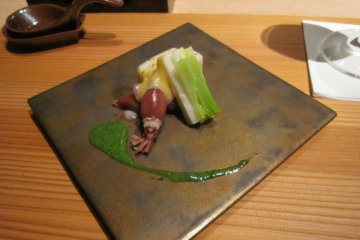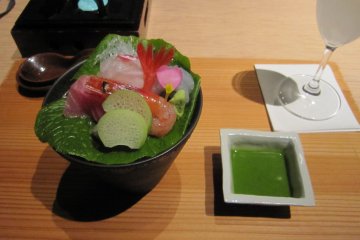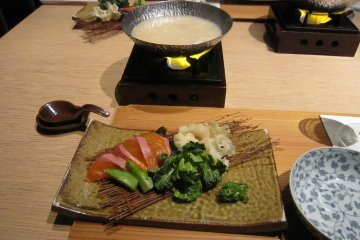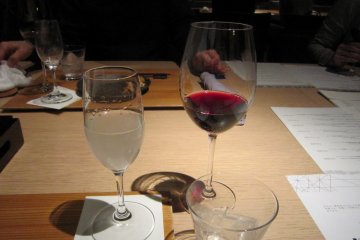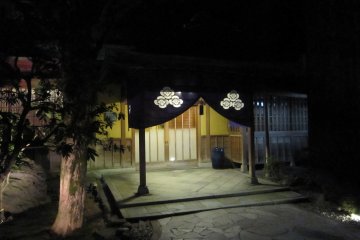One day a friend of mine in Fukui said, "I know a great restaurant in Hama-machi. Why don't we go and dine there?" I've been living in Fukui for over 3 years, but it was the first time to hear the name, 'Hama-machi'. "Where in the world is Hama-machi?" was my first reaction. I checked it out secretly...well, it's on the banks of the Asuwa river.
There is a famous river called the Asuwa in Fukui. Along its banks there are rows and rows of cherry trees which bloom beautifully in spring. Mikuni Port in Fukui prospered from the Edo to the early Meiji period as the port for the Kitamaebune (literally northern-bound ships) to stop by. And the goods unloaded there were shipped down the Asuwa River to the center of Fukui and unloaded again at Hama-machi, the riverside town. As a goods-distribution hub, Hama-machi also prospered, and so a lot of restaurants were built to accommodate the people in the shipping business.
The restaurant my friend took me to is located in this old town Hama-machi. This restaurant, Kaika-Tei sou・an is the annex of an old, established Japanese restaurant, Kaika-Tei, which opened in 1890. My friend takes cooking lessons here. However, there was another reason he invited me: I am a big fan of Kabuki.
You may wonder what Kabuki has to do with a restaurant in Fukui. This restaurant, Kaika-Tei sou・an was designed by the architect, Mr. Kengo Kuma, who designed and renovated the recently re-opened Kabuki-za in Ginza. Since I just happened to have visited the Kabuki-za the week before, and had never expected to see one of the works of the famous architect who designed the Kabuki-za I so love, I jumped up and down with joy. Thank you my friend!
The building of Kaika-Tei sou・an is made of glass. It looks like a glass-made cube covered by wooden lattice. Since I visited there at night, it was dark, and when I looked at it from afar it looked as though it was still under construction. But when I got closer, I could see that the wooden lattice, which looked like scaffolds, represents something of a classical pattern, resembling hemp leaves. And the wooden lattice adds warmth to the super modern building. In the architect, Mr. Kengo Kuma's own words, "The three layered wooden lattice, a design inspired by local traditional textiles, can infiltrate the outside atmosphere into the interior, giving a certain depth like a grove. The space is open while still keeping privacy from the street and the crossing." You'll know what he means by looking at the pictures of the building here.
When you know the long history of the restaurant, you may expect they'd serve authentic Japanese dishes here. But actually, what they serve is...Hmm, I'm not sure what to call it; perhaps contemporary, creative Japanese dishes. They go well with wine, and can be enjoyed not only by elderly Japanese, but also young people and foreigners as well. The master chef, Mr. Hisamitsu Hataji, won the championship at the Tokai/Hokuriku regional competition of the 4th Japanese Culinary Art Competition in 2013. And guess what? This 'Japanese' restaurant has a sommelier! You don't expect to be served by a sommelier in an old Japanese restaurant with long history, do you? You can enjoy great and creative Japanese cuisine under modern architecture served by a handsome and tall sommelier...how surrealistic can it get?! No wonder this place is frequented by young people despite the relatively costly dishes. For your information, this restaurant was featured on NHK International which run 3-day program about Japanese cuisine. How sad that it was only broadcast overseas and we can't watch it here in Japan.
You can choose one from the 4 courses available at dinner time, which range from 7,820 yen to 12,000 yen. We ordered the cheapest course with tasty Japanese sake and wine, coming to around 12,000 yen per person. Lunch time courses are more reasonably priced, from 2,940 yen to 6,000 yen per person. It's a little bit too expensive to visit casually, but considering the quality food, its long history, and the architectural value, it's not overpriced. There are tables and a wide counter that faces the open kitchen, from which you can enjoy the virtuosity of the master chef on the 1st floor, and on the 2nd floor there are individual rooms. A reservation is needed before visiting.
The building and its grounds of the main restaurant, 'Kaika-Tei', was designated as a Tangible Cultural Property of Japan in 2007. It's located next to its annex, Kaika-Tei sou・an, and from the main restaurant the beautiful rows of cherry trees along the Asuwa can be seen. This place was also the party venue of the International Conference of APEC in 2009. Knowing all this, you need some courage and a purse full of money to venture into this place, But if I have a chance, I'd like to visit the main restaurant - in cherry blossom season - once in my lifetime!




